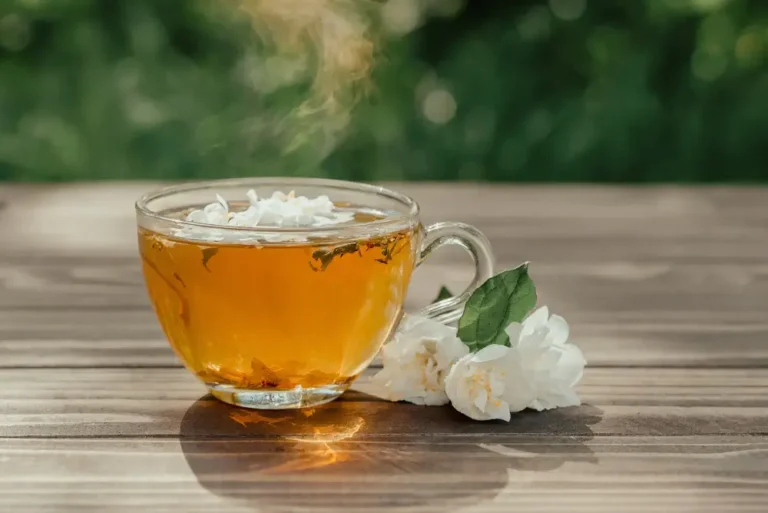Brewing jasmine tea is an art that combines the delicate flavors of green tea with the captivating aroma of jasmine flowers. This heavenly beverage has been cherished for centuries, particularly in China, where the practice of scenting tea with jasmine blossoms originated.
If you’re a tea enthusiast or simply seeking a soothing and fragrant cup, this guide will walk you through the process of brewing the perfect jasmine tea, while also exploring its potential health benefits and rich history.
The Magic of Jasmine Tea
Jasmine tea is a delightful blend of green tea leaves and the intoxicating scent of jasmine flowers. This harmonious combination creates a delicate, floral, and slightly sweet flavor that has captured the hearts of tea lovers worldwide.

The process of infusing the tea leaves with the fragrance of jasmine blossoms is a delicate art that requires patience and skill.
The Origins and History of Jasmine Tea
The art of scenting tea with jasmine flowers has its roots in the Fujian province of China, dating back to the Ming Dynasty (1368-1644 AD).
According to historical records, it was during this period that tea growers in the region began experimenting with the technique of layering fresh jasmine blossoms among drying tea leaves, allowing the delicate floral aroma to infuse the tea.
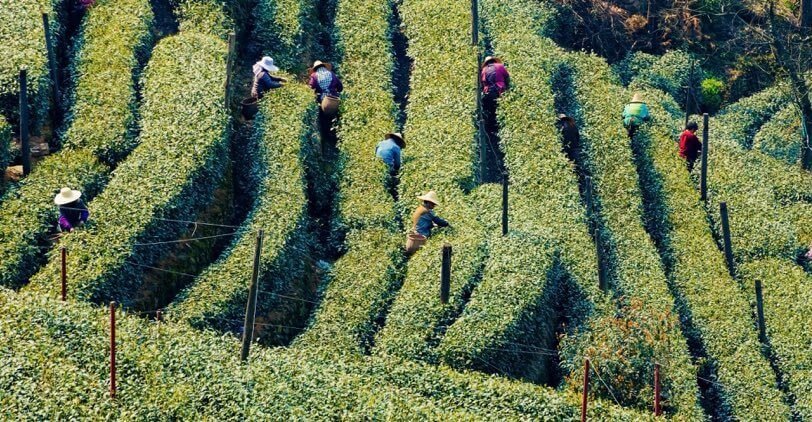
Over time, this practice evolved, and different methods of scenting were developed, such as using jasmine flower buds or blending the tea leaves with jasmine petals.
Jasmine tea quickly became a beloved beverage among the Chinese nobility and eventually gained popularity across the world.
Understanding the Varieties of Jasmine Tea
Before we dive into the brewing process, it’s essential to understand the different varieties of jasmine tea available:
- Classic Jasmine Green Tea: This is the most common and widely available variety. It combines high-quality green tea leaves with the fragrance of jasmine flowers.
- Jasmine Pearl Tea: In this variety, the green tea leaves are carefully rolled into small pearls and then scented with jasmine blossoms.
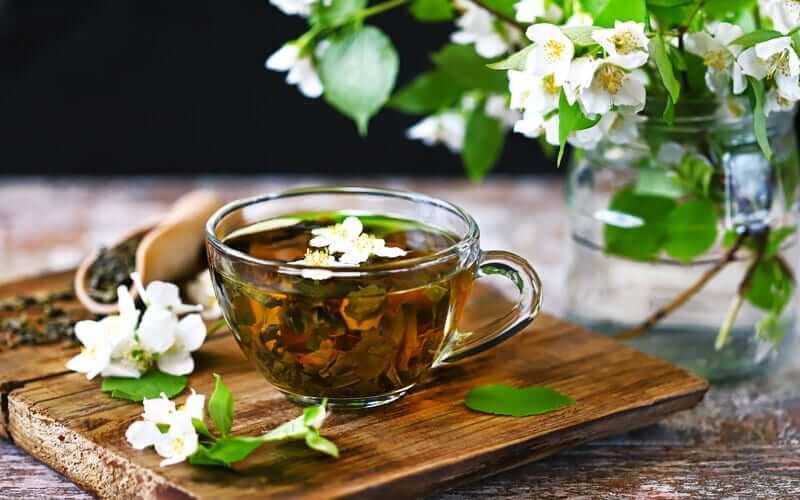
- Jasmine Oolong Tea: Instead of green tea leaves, this variety uses oolong tea as the base, which is then scented with jasmine flowers.
- Jasmine White Tea: A more delicate and rare variety, where white tea leaves are infused with the aroma of jasmine blossoms.
Potential Health Benefits of Jasmine Tea
While more research is needed, several studies have suggested that jasmine tea may offer various health benefits.
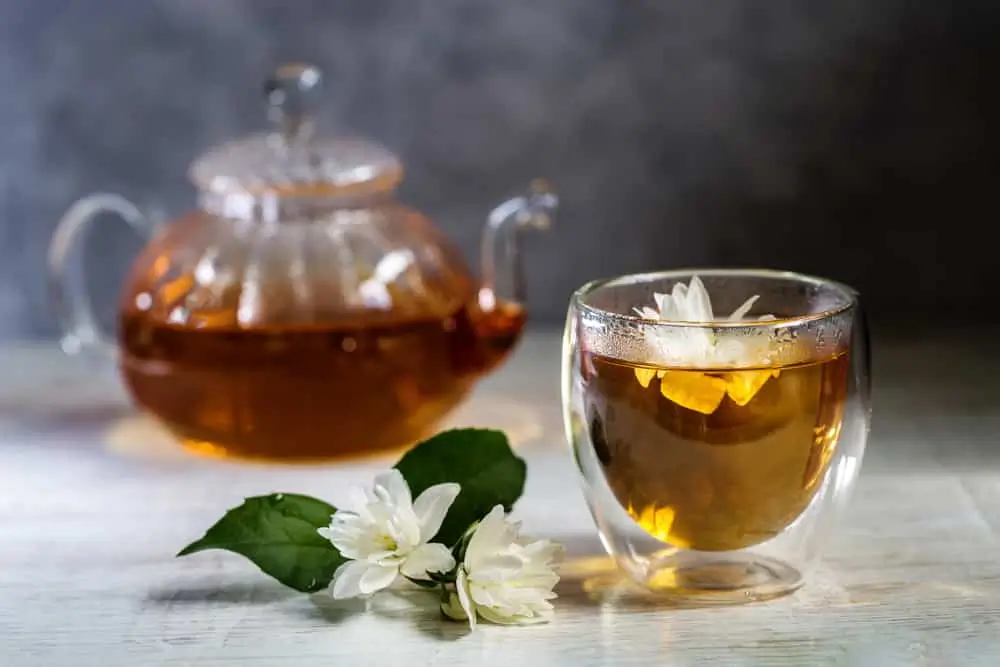
According to a review published in the Journal of Evidence-Based Integrative Medicine, jasmine tea may:
- It helps reduce stress and promotes relaxation due to its calming aroma.
- Improve cognitive function and memory, as suggested by studies.
- Boost metabolism and aid in weight management, thanks to the presence of compounds like polyphenols and catechins.
- Possess antioxidant and anti-inflammatory properties, which may contribute to overall well-being.
It’s important to note that while these potential benefits are promising, more studies are needed to confirm the effects of jasmine tea on health.
Brewing Jasmine Tea: A Step-by-Step Guide
Now that you’re familiar with the different varieties and potential benefits, let’s dive into the brewing process. Follow these simple steps to ensure a perfectly brewed cup of jasmine tea:
Ingredients and Equipment Needed
- High-quality jasmine tea (loose leaf or pearls)
- Fresh, filtered water
- A teapot or gaiwan (a traditional Chinese tea vessel)
- A strainer or infuser basket
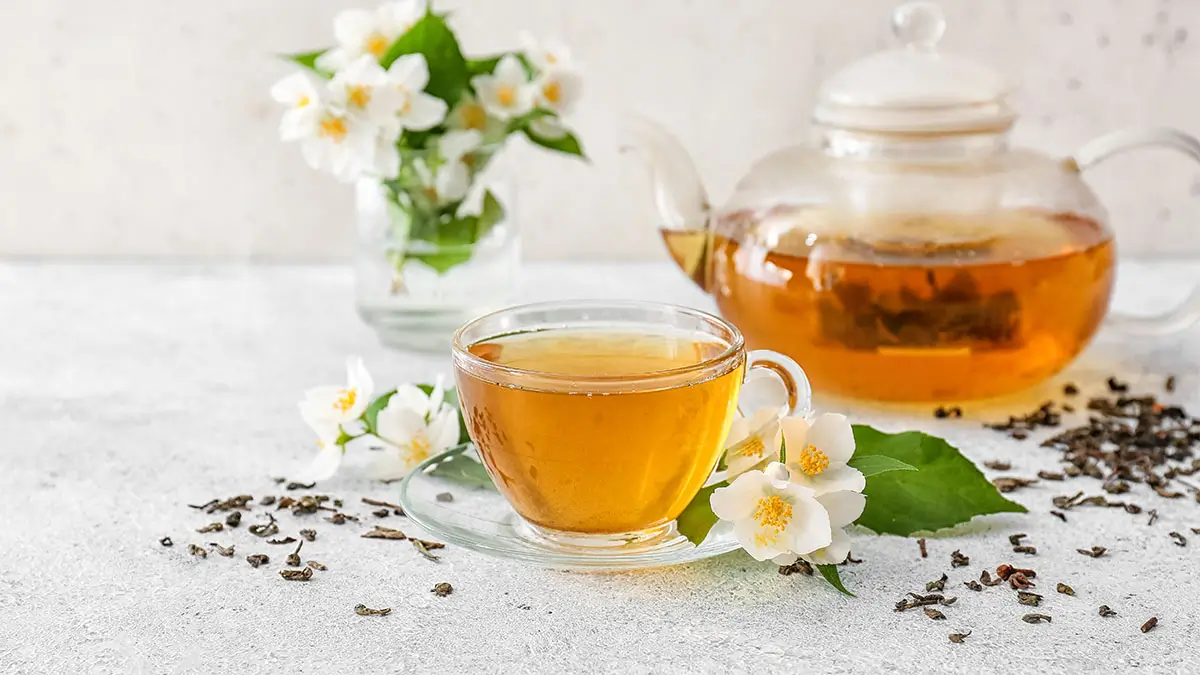
Step 1: Prepare the Water
The quality of water you use significantly impacts the flavor of your tea. Always use fresh, filtered water and bring it to a gentle boil.
For green and white jasmine teas, the ideal water temperature is around 175°F (80°C). For oolong jasmine tea, the water should be slightly hotter, around 195°F (90°C).
Step 2: Warm the Teapot or Gaiwan
Before brewing, it’s essential to warm your teapot or gaiwan. This helps maintain the optimal temperature for steeping the tea. Simply pour a small amount of hot water into the vessel, swirl it around, and then discard the water.
Step 3: Measure the Tea Leaves
The amount of tea leaves you use will depend on your personal preference and the size of your teapot or gaiwan.
A general guideline is to use approximately 1 teaspoon of loose leaf tea or 2-3 jasmine pearls per 6-8 ounces (180-240 ml) of water.
Step 4: Steep the Tea
Once you’ve added the tea leaves or pearls to the warmed vessel, pour the hot water over them. For green and white jasmine teas, steep for 2-3 minutes.
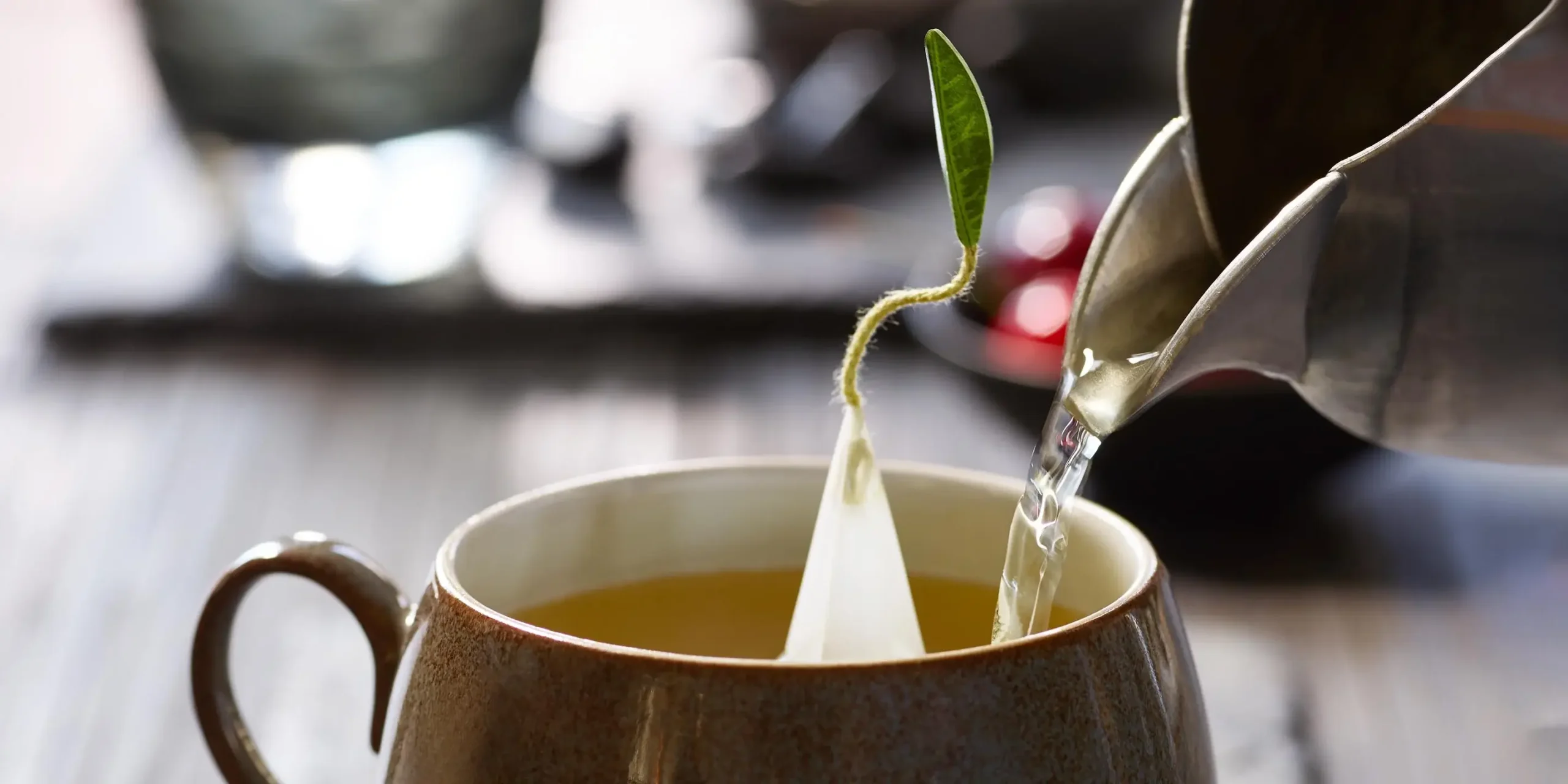
For oolong jasmine tea, steep for 3-5 minutes. Be careful not to oversteep, as it can result in a bitter flavor.
Step 5: Enjoy the Aroma and Flavor
After the steeping time is complete, gently pour the tea into your favorite cup or teapot, using a strainer or infuser basket to separate the leaves.
Take a moment to appreciate the enchanting aroma of jasmine before taking your first sip. Savor the delicate, floral flavor and the subtle sweetness of the tea.
How to Make Strawberry Green Tea?
Storing Jasmine Tea for Optimal Freshness
To preserve the delicate aroma and flavor of your jasmine tea, proper storage is essential. Store your loose-leaf jasmine tea or jasmine tea pearls in an airtight container, away from direct sunlight, heat, and moisture.
Opaque containers or tins are ideal for protecting the tea from light and preserving its freshness.
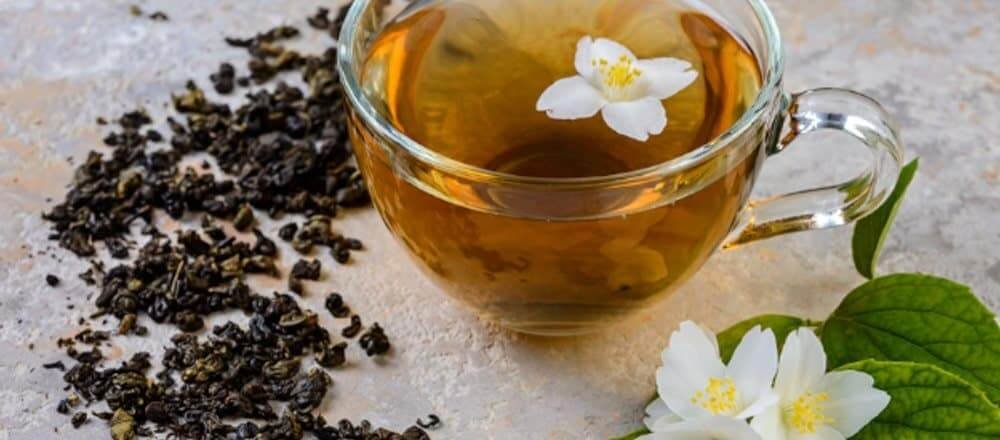
Additionally, it’s recommended to consume your jasmine tea within 6 months to a year of purchase, as the aroma and flavor can gradually diminish over time.
Tips for the Perfect Jasmine Tea Experience
- Use fresh, high-quality tea leaves: The quality of the tea leaves directly impacts the flavor and aroma of your jasmine tea. Always opt for fresh, high-quality tea from reputable sources.
- Experiment with steeping times: Adjust the steeping time according to your personal preference. Shorter steeping times will result in a lighter, more delicate flavor, while longer steeping times will produce a stronger, more robust taste.
- Appreciate the aroma: Before taking your first sip, take a moment to appreciate the intoxicating aroma of jasmine. Inhale deeply and allow the fragrance to tantalize your senses.
- Consider multiple infusions: Many jasmine teas, especially the high-quality varieties, can be infused multiple times. After your first steeping, simply add more hot water to the leaves and steep for a slightly longer duration.
- Pair with complementary foods: Jasmine tea pairs beautifully with light snacks and desserts. Try it with fresh fruit, sweet pastries, or delicate confections to enhance the overall experience.
My Thoughts
Brewing jasmine tea is an art that combines simplicity and elegance. By following these steps and incorporating the tips provided, you’ll be able to create a perfectly brewed cup of jasmine tea that will transport you to a world of floral aromas and delightful flavors.
Whether you’re a seasoned tea connoisseur or a newcomer to the world of jasmine tea, this guide will help you master the art of brewing and enjoying this captivating beverage, while potentially benefiting from its purported health advantages.
